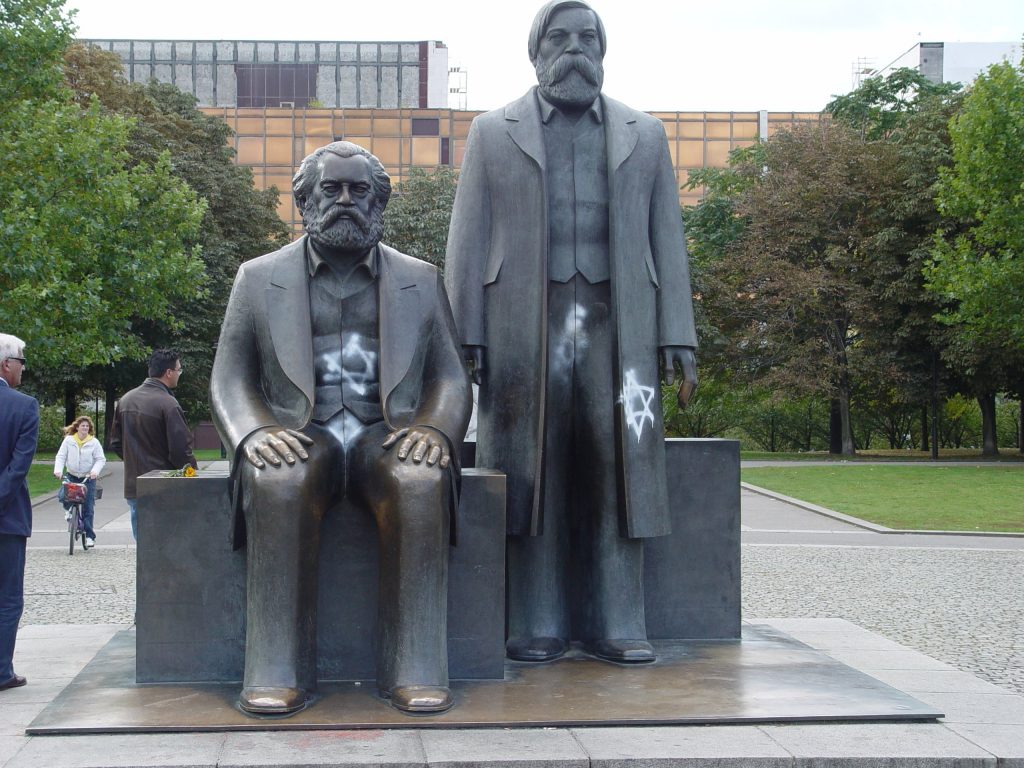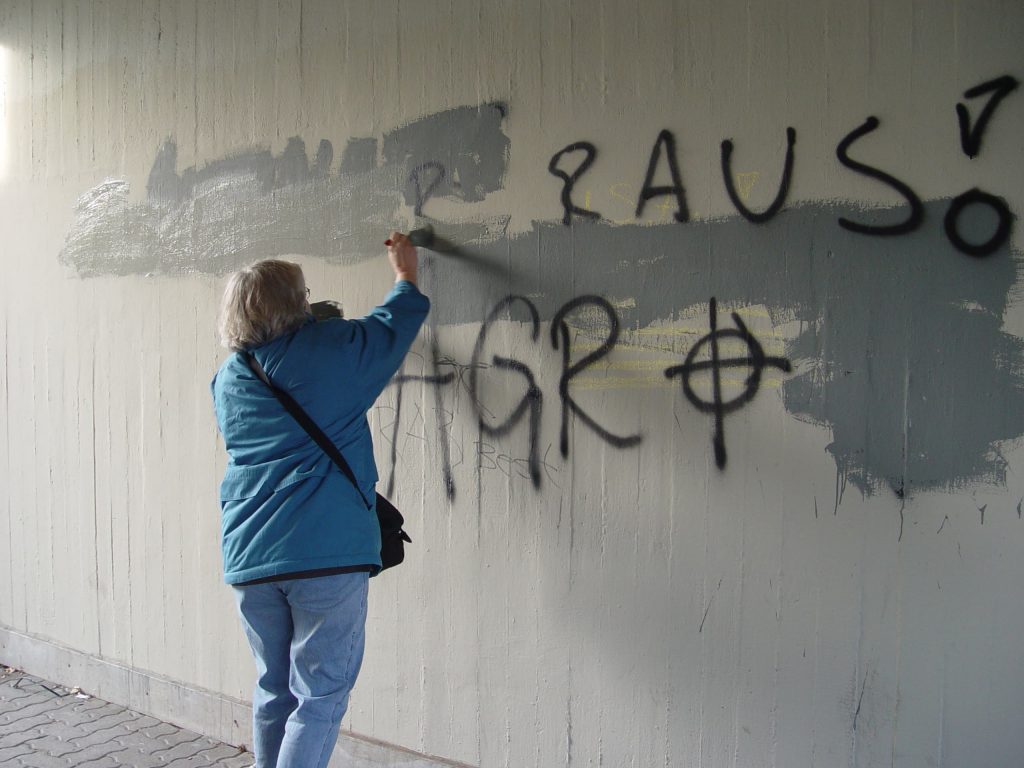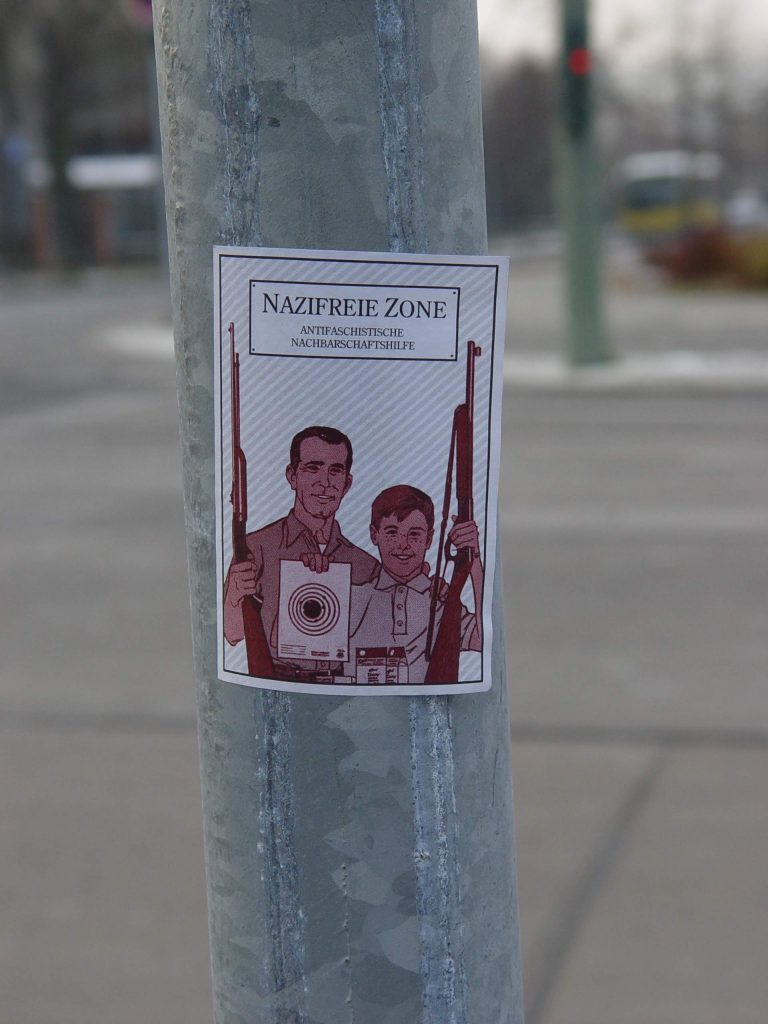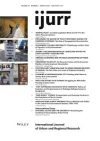Not strong enough to govern at the national level or in large cities, the far right in Germany today finds itself in a position very different from India, Brazil, Turkey, the Philippines, or other countries where authoritarian right-wing populism has consolidated its grip on power. Its relationship to urban space and its capacity to shape city planning therefore contrast with these other cases. Yet, while arguably more limited, the discussion below aims to show that they are nevertheless significant. To be sure, the political sway of right-wing populists in Germany has surged in recent years. In the early 2000s, the virulently right-wing extremist National-Democratic Party of Germany (NPD) provoked panic when it won a handful of state parliament seats. In hindsight, such gains appear negligible as compared with the current triumphs of the far right Alternative for Germany (AfD) party, which in 2017 became the third largest in the Federal Parliament. Yet right-wing populists have largely remained in the opposition. Especially in larger constituencies—such as the Federal or state levels or in the big cities—they have so far fallen short of winning sufficient support for staking claims to lead governing coalitions. As importantly, and for reasons linked with Germany’s relationship to its National-Socialist past, all other political forces shun any form of collaboration with them even where they do score relatively high results. Their lot therefore contrasts, too, with numerous other European countries where the far right has sometimes been quite successful in consolidating political power at subnational scales. In Germany, by contrast, periodic far right gains—and its contemporary meteoric rise—have instead sparked calls for increased government commitment to and investment in the struggle against its further expansion.
In other respects, however, the German case appears more typical, resonating closely with familiar patterns from other contexts. This is particularly so with regard to the political tensions between cities and countryside. As in many other European countries, the populist right in Germany boasts far higher relative support in rural areas and in small towns, while its appeal in larger cities and metropolitan areas has remained limited. When viewed in an international comparative perspective, the record appears less clear-cut. In Turkey, for example, support for the Justice and Development Party (Adalet ve Kalkınma Partisi, or AKP) has been high in rural and semi-rural areas and among recent migrants to the cities. In India, however, the far right Shiv Sena originated and gained significant clout in Mumbai, while in Brazil’s recent elections Bolsonaro and his allies performed particularly well in some of the largest cities and less so in many rural areas. Yet across Europe xenophobia, nationalism, and right-wing populism have shown a fairly consistent tendency to be stronger in the countryside and in smaller towns. German cities in particular tend to be more liberal.

Marx-Engels forum near Alexanderplatz, Berlin: anti-Semitic graffiti. Photo: Nitzan Shohan, 2005.
In this, the uneven spatial configuration of right-wing populist success in Germany is strongly linked with levels of xenophobia and racism, which are similarly lower in metropolitan areas. While a comprehensive study that would demonstrate this relationship at the national scale is, to the best of my knowledge, not yet available, strong evidence corroborates the correlation for particular cases. Thus, for example, an annual government survey that measures public opinion on diverse issues in the state of Saxony has consistently found lower levels of racism, xenophobia, and anti-democratic attitudes among residents of cities with over 100,000 inhabitants. 1 The national ALLBUS survey, run by the Leibnitz Institute for Social Science, identified similar trends across Germany.2 Meanwhile, several post-elections analyses in the aftermath of the 2017 Federal Election indicated similar negative correlations between population density and voter support for the AfD party.3
Several explanations account for such differences. For example, the contact hypothesis argues that the greater hybridity and mixture—ethnic, linguistic, religious, etc.—of cities increases opportunities for encounter with alterity and thereby attenuates racism and negative relations to difference. In today’s Europe, this mostly relates to levels of Islamophobia. Theories that emphasize the asymmetries in core-periphery relationships dwell on how cities have fared better in an increasingly polarized spatial distribution of privilege and deprivation. Rural peripheries, in this view, because of their disadvantaged position, offer better opportunities for right-wing populist rhetoric to find sympathetic publics.
From a different perspective, political scientists have focused on what they call political culture, or the extent of consolidation of strong and effective civil society structures and the level of commitment to democratic institutions and political processes. Solid democratic political cultures, they have argued, often characterize urban core areas but are under- or differently developed in less urbanized contexts. Put differently, cities present us with a broad range of actors and institutions that would oppose and resist the spread of right-wing populist currents in ways that small towns or villages do not.
Viewed as a challenge of neoliberal urban governance, cities increasingly find themselves inserted in competitive processes at national and transnational scales that place significant pressures for constant image management. Curbing right-wing populist trends and producing a liberal, progressive, multicultural appearance is often important for performing well in such conditions. In Germany, the press regularly reports on the potentially devastating impact that right-wing extremism in particular localities could hold for economic investment, regional competitiveness, or the possibility of recruiting highly qualified and globally mobile workers. Municipalities must often combat the ill repute that right-wing nationalism and xenophobia bring.

Activist erasing hate graffiti in Neukölln, Berlin. Photo: Nitzan Shohan, 2005.
Right-wing populism has generally garnered lower support in urban areas in Germany, both in terms of electoral gains and at the level of everyday discourses or local movements and mobilizations. At the same time, however, in Berlin and elsewhere, cities have also proved hospitable to the far right in other respects, for example by offering greater resources and more developed infrastructures. It is within the major cities that the federal, state, or regional headquarters of political parties are located. As importantly, the urban density of metropolitan cores includes shops that cater to right-wing extremist consumers, dining and drinking establishments whose owners sympathize with far-right consumers and provide them with safe spaces to hold their events, or a variety of outdoors sites for activities and gatherings. Therefore, while in relative terms (and hence electorally) right-wing populists have performed less well in cities, in absolute terms urban centers have nevertheless offered them greater recruitment potentials, a numerical critical mass, and a wealth of opportunities that often surpass small towns and villages. Put differently, it is not my argument that urban venues as such appeal more to the far right than rural ones, but rather that right-wing populists in larger cities, despite their proportional marginality, nevertheless reach sufficient numbers to maintain a significant level of consumption and activism.
Accordingly, far-right groups have sustained an important presence even in large and relatively liberal cities. Berlin, for instance, politically leans to the left and is by far Germany’s most populous city. Yet even here, certain areas have gained infamy as so-called “fear-zones.” In such neighborhoods, often concentrated in certain parts of the city’s east, the perceived incidence of right-wing extremism, xenophobia, and the potential for nationalist violence represents the menace of possible harm to certain groups – racialized minorities and migrants, to be sure, but also homeless people, visibly non-heterosexual persons, punks, or individuals with a politically leftist appearance, who frequently find themselves among the most likely victims of neo-Nazi violence. Here as elsewhere, labels such as these operate as spatial stigmas that correspond closely neither to crime statistics nor necessarily to the realities on the ground, which for the most part reveal themselves as more complex and diverse. Yet they find their way into popular renderings of such spaces, for example in books, films, news reporting, or TV programs (the Netflix series “Dogs of Berlin” is a recent case in point) and hence they shape the image of neighborhoods and sometimes of entire districts. Such spatial stereotypes render these areas less attractive for certain prospective residents or business and more appealing for self-identified nationalists. They therefore unwittingly become self-fulfilling prophecies.
Conversely, in Germany and many other European contexts, cities feature prominently in public discourse—not only of what are ordinarily considered right-wing populist voices—as evidence of the failure of liberal or leftist policies. In a curious reversal of the geographies of fear zones for migrants and other potential victims of right-wing violence, the political rhetoric of the far right paints entire urban areas, at times even entire cities, as dangerous for German bodies and souls. In Berlin, the neighborhoods of Kreuzberg, Neukölln, or Wedding, where many migrants and people with family migration backgrounds reside, often emerge in the public sphere as spaces of violence, poverty, and criminality. Worse, they are taken to spell the ostensible demise of the nation. Right-wing extremist public figures—political leaders, writers, singers—evoke such places as scandals that justify and demand deportations, heavy-handed policing, even mass poisoning or arson.

“Nazi-free zone”, Treptow, Berlin. Photo: Nitzan Shohan, 2005.
The spatialized configurations of far-right currents therefore pose serious challenges for urban neighborhoods and districts. At larger scales, as already mentioned, they may present difficulties of city branding for entire metropolitan areas. In the case of Berlin, such problems take on a national and frequently enough international scale. More than anything, then, far right-populism informs urban policy in Germany by emerging as a mediatized scandal in need of intervention and by inviting government implementation of programs and policies that promise to reverse its gains or at the very least diminish its public visibility. Accordingly, for example, specialized police squads keep close watch over activists and hotspots, while other law enforcement units harass young neo-Nazis with ID checks, body searches, and fines in order to dissuade them from loitering in public; especially dedicated social work teams are tasked with dissolving groups of right-wing extremists; and schools, soccer stadiums, youth clubs, and other public venues institute zero-tolerance policies that result in expulsions and bans. Hand in hand with such repressive policies, governments also promote initiatives that promise to improve the image of their cities. Municipal districts direct budgets to anti-racist NGOs, intercultural youth centers, school exchange programs, festivals that celebrate democracy and cultural diversity, or commemorations and ceremonies that seek to fortify the hold of officially sanctioned historical narratives about the troubled German past and how these are emplaced in the urban landscape.
Accordingly, throughout Germany, urban settings regularly turn into battlegrounds for contestations over the ways in which cityscapes embody and represent historical and political significations. Nationalist marches and demonstrations regularly disturb central tourist hubs as well as peripheral sleepy suburbs, frequently drawing thousands-strong crowds of anti-fascist protestors and similar numbers of police troops. Occasionally, they result in significant property damage and violent clashes between marchers, protestors, and police. Carefully premeditated vandalism often targets memorials and monuments dedicated to the memory of the victims of National Socialism or of those who fought against it in the resistance. Cemeteries where German World War II soldiers, SS officers, or Nazi leaders are buried turn into Meccas for multitudes of nationalists who allegedly gather to mourn “German” suffering and heroism. Such disruptions of how historical memory is inscribed in the city at times take spectacular forms and provoke strong reactions, including demands for the increased use of surveillance technology such as CCTV cameras, whose presence in German cities is still comparatively low. As importantly, they have led to various legislative initiatives that proposed changes to the constitutional guarantees on the freedom of expression and the freedom of assembly, which were indeed narrowed in the early 2000s in response to a planned right-wing extremist march in Berlin. While generally not in power, then, and while lacking the tools to directly define city planning and urban policy, the far right in Germany has nevertheless impacted urban space in several important way in recent decades.
Nitzan Shoshan is Research Professor in the Center for Sociological Studies at the Colegio de México in Mexico City. He works on issues of nationalism and neoliberalism, the nation state, memory and temporality, urban space and violence, and semiotic theory. He is the author of The Management of Hate Nation, Affect, and the Governance of Right-Wing Extremism in Germany (Princeton University Press, 2016), and numerous research articles.
All essays on Political Geographies of Right Wing Populism
Introduction
Liza Weinstein
Spatial Configurations of Right-Wing Populism in Contemporary Germany
Nitzan Shoshan
Waiting for Duterte
Marco Garrido
Brazil’s Political Peripheries and the Authoritarian Style
Benjamin H. Bradlow
Regional Liberals and the Urban Anxieties of Indian Populism
Mona G. Mehta
The Contested City as a Bulwark against Populism: How Resilient is Istanbul?
Berna Turam
Related IJURR articles on Political Geographies of Right Wing Populism
‘Get out of Traian Square!’: Roma Stigmatization as a Mobilizing Tool for the Far Right in Timişoara, Romania
Remus Creţan Thomas O’brien
Revitalizing the City in an Anti‐Urban Context: Extreme Right and the Rise of Urban Policies in Flanders, Belgium
Pascal de Decker, Christian Kesteloot, Filip de Maesschalck and Jan Vranken
Using the Past to Construct Territorial Identities in Regional Planning: The Case of Mälardalen, Sweden
Luciane Aguiar Borges
Le Pen’s comeback: the 2002 French presidential election
Nonna Mayer
The Urban Politics and Subject Formation
Lisa Hoffman
How Globalization Really Happens: Remembering Activism in the Transformation of Istanbul
Christopher Houston
The Postcolonial City and its Displaced Poor: Rethinking ‘Political Society’ in Delhi
Sanjeev Routray
The Ideology of the Dual City: The Modernist Ethic in the Corporate Development of Makati City, Metro Manila
Marco Garrido
How Interspersion Affects Class Relations
Marco Garrido
The Citizen Participation of Urban Movements in Spatial Planning: A Comparison between Vigo and Porto
Miguel Martínez
Hamburg’s Spaces of Danger: Race, Violence and Memory in a Contemporary Global City
Key Macfarlane & Katharyne Mitchell
Experiences of Urban Militarism: Spatial Stigma, Ruins and Everyday Life
Silvia Pasquetti
© 2019 THE AUTHOR. INTERNATIONAL JOURNAL OF URBAN AND REGIONAL RESEARCH, PUBLISHED BY JOHN WILEY & SONS LTD UNDER LICENSE BY URBAN RESEARCH PUBLICATIONS LIMITED
This is an open access article under the terms of the Creative Commons Attribution-NonCommercial-NoDerivs License, which permits use and distribution in any medium, provided the original work is properly cited, the use is non-commercial and no modifications or adaptations are made.
